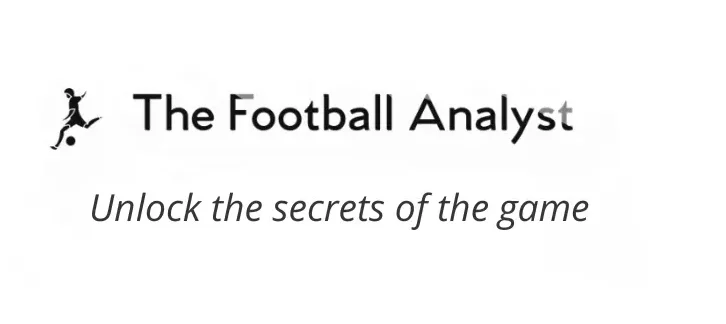Analyzing football players like a professional scout goes far beyond watching highlights and giving opinions. It requires tactical awareness, a structured method, and the ability to translate observations into clear, actionable insights.
Whether you’re a coach, analyst, or aspiring scout, this guide breaks down how to evaluate players with the same depth and discipline used by professionals in elite environments.
1. Context is Everything: Understand the Player’s Role
Scouting without context is guesswork. Before assessing a player’s performance, you need to understand the tactical demands of their role in the team structure.
Ask yourself:
- What is the team’s game model?
- What is the system (e.g., 4-3-3, 3-5-2) and how does it behave in each phase?
- What is the player’s function within it—both with and without the ball?
A right-back who inverts in possession and forms part of a midfield 3 has a very different role from one who overlaps down the wing in a traditional system. Always analyze performance in relation to role expectations.
✅ Quick tip: Before you write anything about the player, study how the team plays and how the player fits into it.
2. Observe Patterns, Not Moments
Great scouting isn’t about spotting isolated highlights. It’s about identifying repeated behaviors over time and across different match contexts.
Watch full matches and look for:
- What the player does off the ball
- How they react under pressure
- Their consistency in decision-making and execution
- Their actions when leading, drawing, or chasing the game
Consistency and adaptability are far more valuable than a moment of brilliance.
✅ Quick tip: Write down what you see a player do 5+ times, not what they did once.
3. Use Video to Analyze Micro-Behaviors
Live scouting is useful, but video allows you to slow the game down and focus on the finer details.
Key micro-behaviors to observe:
- Scanning frequency before receiving
- Body orientation and first-touch direction
- Movement to receive or create space
- Pressing angles and timing
- Positioning in defensive structure
These small details often define whether a player can operate at a higher level.
✅ Quick tip: Pause and rewind — good habits are often subtle but consistent.
4. Structure Your Analysis Across Core Areas
A great scouting report is always structured and balanced. Use a consistent framework to evaluate each player in key areas:
Physically
- Acceleration, agility, strength, stamina, jumping
Technically
- Ball control, passing range, dribbling, finishing
Tactically
- Positioning, decision-making, awareness, game intelligence
Psychologically
- Work rate, resilience, focus, leadership, coachability
Off-the-ball
- Pressing effort, tracking back, scanning, movement timing
✅ Quick tip: Don’t skip any category. Even if one area isn’t decisive now, it might be later in recruitment.
5. Write With Precision and Clarity
Your observations are only as useful as your ability to communicate them. Avoid vague terms like “solid passer” or “pretty quick.”
Instead, be specific:
- “Regularly plays accurate diagonal switches to the far side”
- “Completes most take-ons when isolated 1v1 in wide zones”
- “Struggles to recover into position after losing the ball”
Describe behaviors, not impressions. Avoid assumptions about personality or attitude unless you have off-pitch knowledge.
✅ Quick tip: Replace every vague word (“decent”, “sometimes”) with an action-based description.
6. Use Data to Guide and Support Your Scouting
Data shouldn’t replace what you see—it should help guide and strengthen it.
For example:
- A fullback with high progressive passes and carries per 90 may signal a forward-thinking role
- A striker’s xG vs. actual goals helps assess finishing efficiency
- A midfielder’s defensive duel win % contextualizes their out-of-possession impact
Always read stats through the lens of the player’s role and tactical context. Raw numbers without context can be misleading.
✅ Quick tip: Let data lead you to questions—not conclusions.
7. Project Ceiling and Suitability
Scouting is about more than what a player is—it’s about what they can become.
Think about:
- How much is the player relying on natural talent vs. coached habits?
- Are they physically close to their peak or still developing?
- Could their strengths translate into a different league or style?
You also need to assess system fit. Some players thrive in high-possession teams but struggle in transition-heavy systems—and vice versa.
✅ Quick tip: Potential = ability + context + room to grow. Always consider all three.
8. Avoid Common Scouting Pitfalls
Even well-observed reports can fall flat if they’re poorly delivered. Avoid these common errors:
- Writing without a clear structure
- Making vague or subjective statements
- Focusing on isolated moments
- Assuming intent or emotion (“he doesn’t care”)
- Over-complicating the language
- Being overly critical without suggesting context or fit
- Forgetting your audience (coaches, recruiters, or analysts)
✅ Quick tip: The best reports are clear, focused, and purpose-driven—not just detailed for the sake of it.
Final Thoughts
To scout like a pro, you need more than a good eye. You need a method. Context, repetition, structure, clarity, and adaptability are your core tools.
The best scouts don’t just find “good” players. They find the right players for a specific system, league, and moment in time.
✅ Final tip: Don’t look for the flashiest player. Look for the one who fits. That’s where good scouting becomes great.
